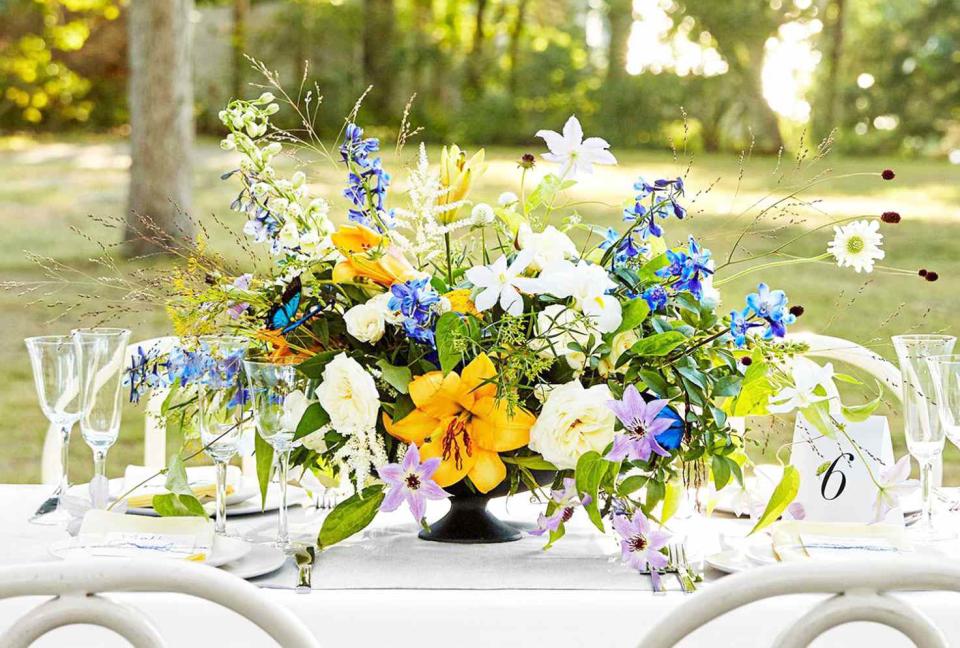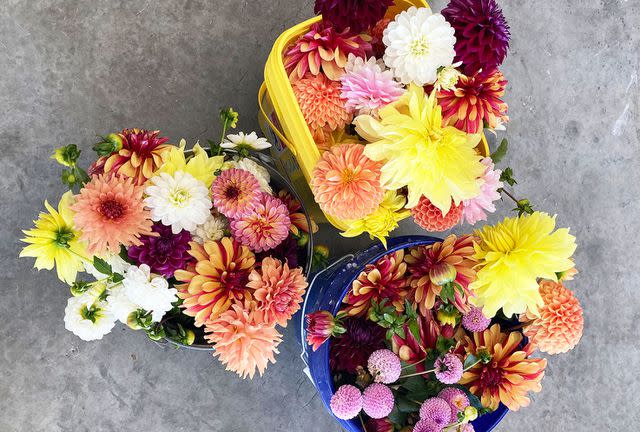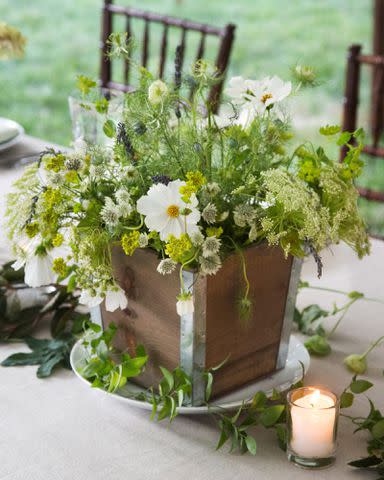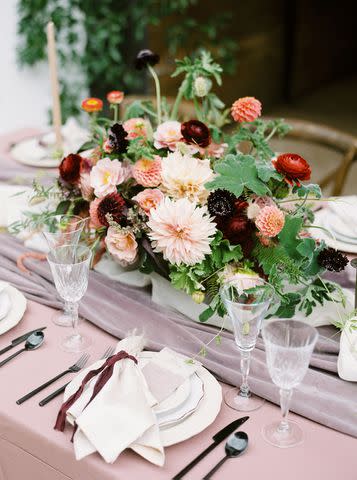6 Eco-Friendly Wedding Flower Ideas That Are Simple and Impactful
Consider these beautiful floral planning ideas that are gentler on Mother Nature.

Thayer Allyson Gowdy
If you want to plan an eco-friendly wedding or just be more sustainably minded for any celebration you host, start with your flower selection. There are many ways to keep the environment in mind as you design your celebration's floral landscape, from choosing in-season flowers to donating them at the end of the event. Ahead, we spoke with event planners and floral designers to give us their top tips and tricks for decorating your event with beautiful blooms or greenery in the most sustainable way possible.
Meet Our Expert
Sarah Johns, owner and lead designer of Something Styled Events + Floral Design
Kathleen Deery, owner of Kathleen Deery Design, an event design company, and Chief Creative Officer at Paula LeDuc Fine Catering & Events
Related: 13 Ways to Plan a More Sustainable Wedding
Work With Local Flower Farms

Cherrie Herrin-Michehl
To take a greener approach to wedding-day flowers, source your blooms from local farmers who grow their varieties in organic soil, using chemical-free treatments, says Sarah Johns, owner and lead designer of Something Styled Events + Floral Design. Doing so ultimately leads to longer-lasting blooms. "A local flower farmer will cut the flowers right before you pick them up, so they are fresh," she says. On the hunt for an organic flower farmer in your area? Johns recommends researching VeriFloral-certified vendors, who grow in an all-natural, chemical-free environment with no harsh working conditions.
Reuse and Repurpose Containers
One way to bring more personality alongside an eco-friendly element is to use thrifted, second-hand, or locally handmade containers for your florals wherever you can. "Consider how you’re presenting your florals," says Kathleen Deery, owner of Kathleen Deery Design and Chief Creative Officer at Paula LeDuc Fine Catering & Events. "We have the pleasure of working with artisans like ceramicists who handcraft the most stunning vessels, so our inventory of different glazes, colors, shapes, and sizes is quite vast. Reusing and repurposing these heirloom containers and vessels further enhances the sustainability of your event.
Related: 10 Things You Should Thrift Instead of Buying New
Swap Cut Centerpieces for Potted Plants

Chuck Baker
Ultimately, you don't have to use cut flowers in every big-day arrangement; dried iterations look lovely in bouquets. Or, swap arrangements with freshly-cut blooms for potted plants, suggests Johns. "We once had a client want to walk down the aisle with kale as her bouquet; she used potted plants and herbs as her centerpieces," she says. "Guests were able to take the centerpieces home and replant those herbs and plants."
Related: 20 Wedding Bouquets and Arrangements Packed with Fresh Herbs
Use Floral Foam Alternatives
Floral foam is a lightweight foam block that florists can use to keep flowers in place. It's also made from plastic, and when floral foam eventually breaks down, it breaks down into microplastics that can stay in the environment for centuries. "Exploring floral foam alternatives promotes sustainability throughout the design process," says Deery. "Using curly willow to create a nest, instead of floral foam, serves as a strong grid to design your arrangements."
Choose Flowers That Are in Season

Jenny Haas
Choosing flowers that are in season is an easy way to support natural life cycles, says Deery. "Seasonality plays a crucial role in sustainable floral design," she says. By choosing flowers and greenery that are in season, or opting for perennial and regenerative flowers, you support natural growth cycles and reduce the need for energy-intensive methods or long-distance transportation."
Related: 23 Ways to Use In-Season Flowers at Your Fall Wedding
Donate Leftover Flowers
At the end of the evening, consider donating any fresh arrangements to a nursing home or hospital (check your local institutions, which should outline flower exchange or donation policies on their websites). This is a better option than simply tossing them out, and gives your blooms a second life as you support members of your community in the process, says Johns.
Read the original article on Martha Stewart.

